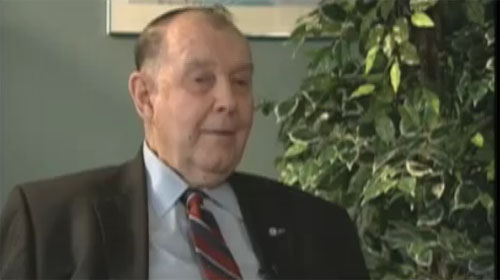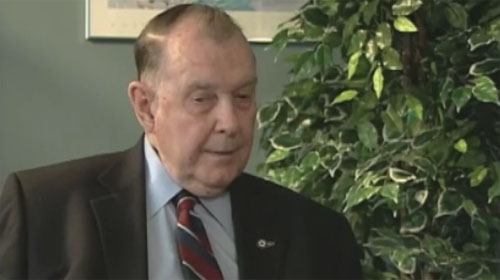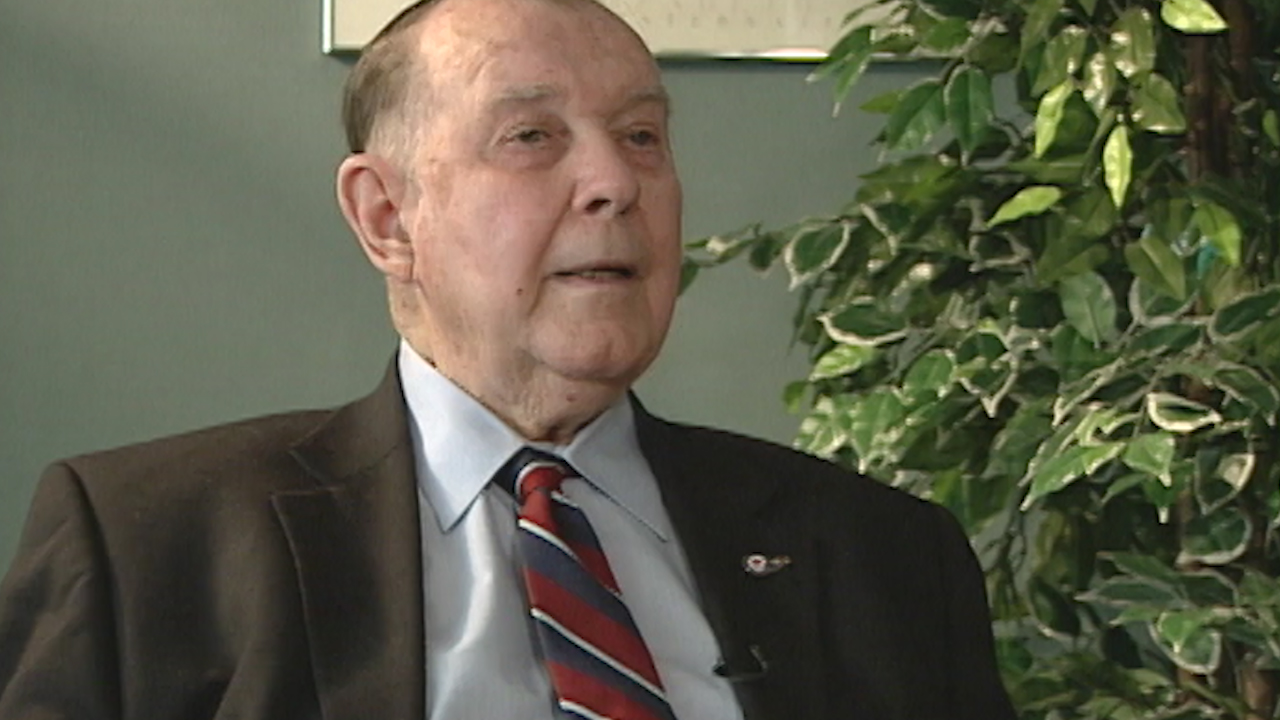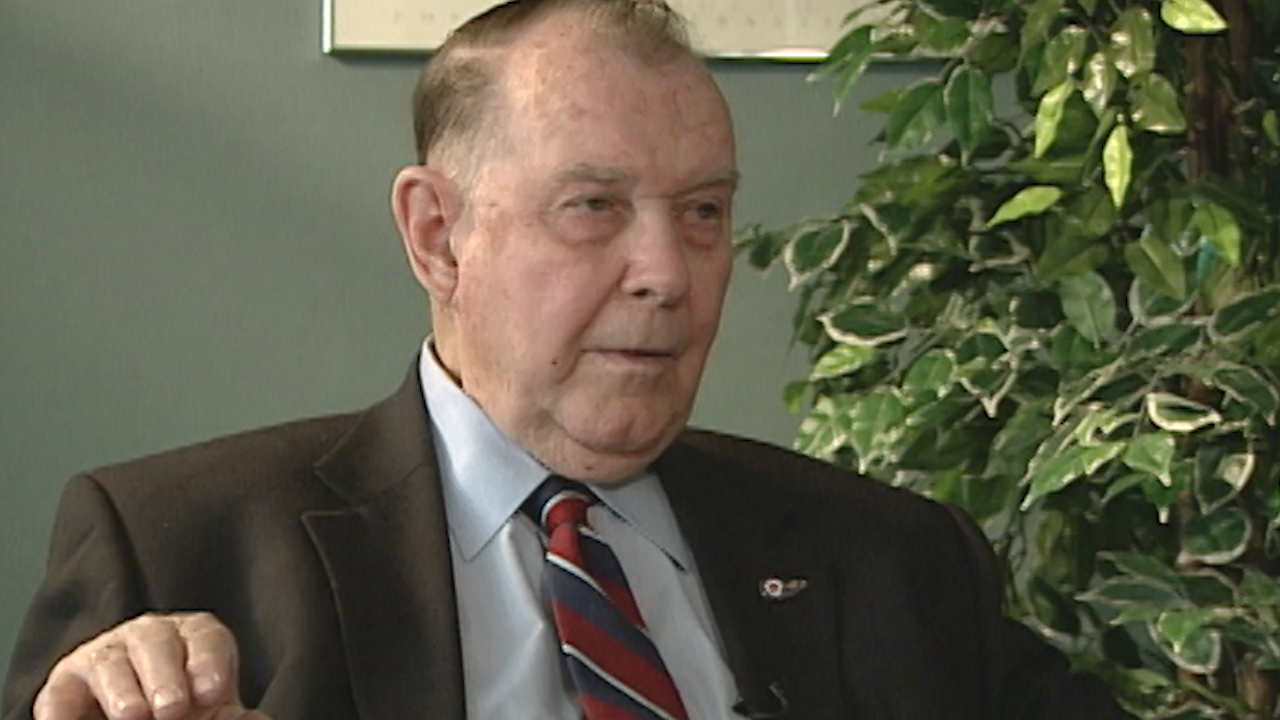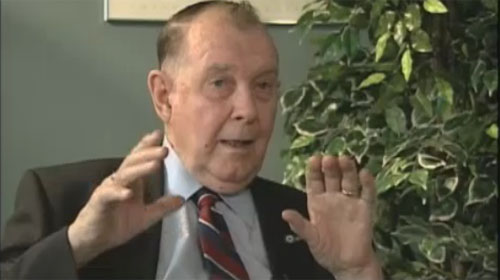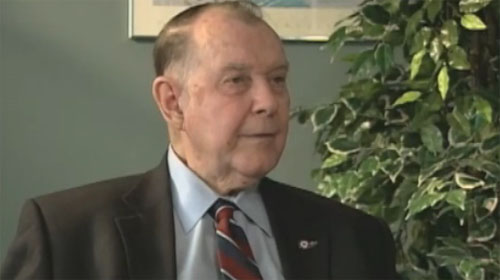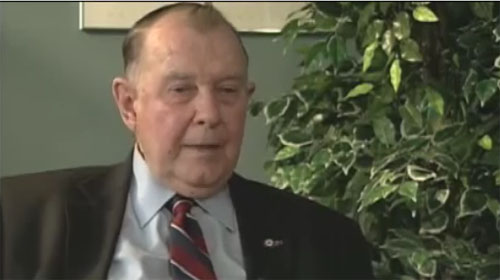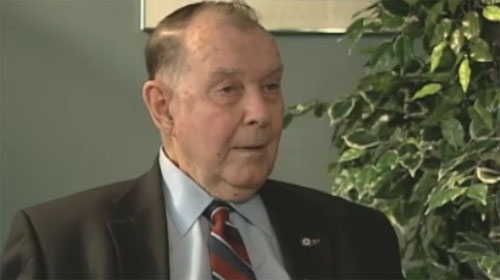Strafing Rommel
Heroes Remember
Strafing Rommel
Transcript
In the Rommel case which happened on July the 17th, our squadron
flew two sorties that day; one in the afternoon and the second
one took off at 6:15 in the evening. It was late in the
afternoon and we were twelve aircraft; I’m leading one section
and Jack Shepard was our CO leading another section and, oh Rod
Smith was leading another. As soon as we got airborne we broke
up into three sections of four looking for targets of
opportunity. I flew ... see the channel here ... our troop is
here ... Caen is here with a river coming down. I go to the
other side and I spot this staff car coming down this highway or
road with trees on either side and what ...? You’re the hunter.
The thing that I had learned from previous is that if you dipped
your wings – they had a lookout – and if they saw you dip your
wings they figured that you had spotted them and they would pull
of and go in the ditch and take cover. And so I said to the
section, “I’ve got a target, keep straight and level.” So we
went on and myself, my #2 and so on. I watch as the car
approached an opening and I timed it to come down. My #2 slid
under and he’s off to one side and we came down and I strafed it
down the left side and it veered off and went into the ditch.
Others claimed – one was a squadron leader Locke from South
Africa flying with an RAF squadron – his report was that he
attacked the staff car from behind down the wooded road ... you
don’t do that. Americans claimed that a P47 had got Rommel. Well
as far as I was concerned ... end of story. Then later on ...
24-36 hours later ... the Germans came back and said no it was a
Spitfire and so the guys all said, “Charley, in that spot it had
to be Rommel.”
The big thing was that in the reports ... and here again two-
three days ... we’re flying three times a day ... end of story
and that’s it. The big thing was that later on the report was
that Rommel had been badly injured and he was in the hospital.
After the war and so on people did some investigation and said
this took place – according to the Germans – between – I think
it was 5:30 or 5:25 and 5:40 or 5:45. We took off at 6:15! And
so I got a letter about that and they said I wasn’t in the air
at the right time. Fine! That would be 1992 and I never wanted
to make anything of it. That’s fine! I didn’t talk about things
... well I had started talking about fellas that I flew with ...
but I never talked about that. And then with research – this is
where we were on double daylight time and the Germans were on
and Europe was on single daylight time. So I was in the air at
the right time and so on ... so it’s been authenticated that I
was in the right place at the right time and I put
Rommel in the hospital.
Description
Mr. Fox describes his strafing attack on German Field Marshall Rommel’s staff car.
Charley Fox
Mr. Fox was born in Guelph, Ontario in 1920. He signed up in March, 1940, and was called up the following October. Mr. Fox excelled during pilot training, but a bout of scarlet fever prevented him from accompanying his squadron overseas. Once returned to health, he became a flight instructor, during which time he married. A short time later, he was sent overseas and joined the 412 Spitfire Squadron. He was involved in air support for D-Day and flew many follow-up missions destroying “targets of opportunity” in France and Holland. After the war, Mr. Fox returned home and became a retailer. He now resides in London, Ontario.
Meta Data
- Medium:
- Video
- Owner:
- Veterans Affairs Canada
- Duration:
- 3:47
- Person Interviewed:
- Charley Fox
- War, Conflict or Mission:
- Second World War
- Location/Theatre:
- Europe
- Battle/Campaign:
- Normandy
- Branch:
- Air Force
- Units/Ship:
- 412 Spitfire Squadron
- Rank:
- Aircraftman 2nd Class / Flight Lieutenant
- Occupation:
- Pilot
Related Videos
- Date modified:



